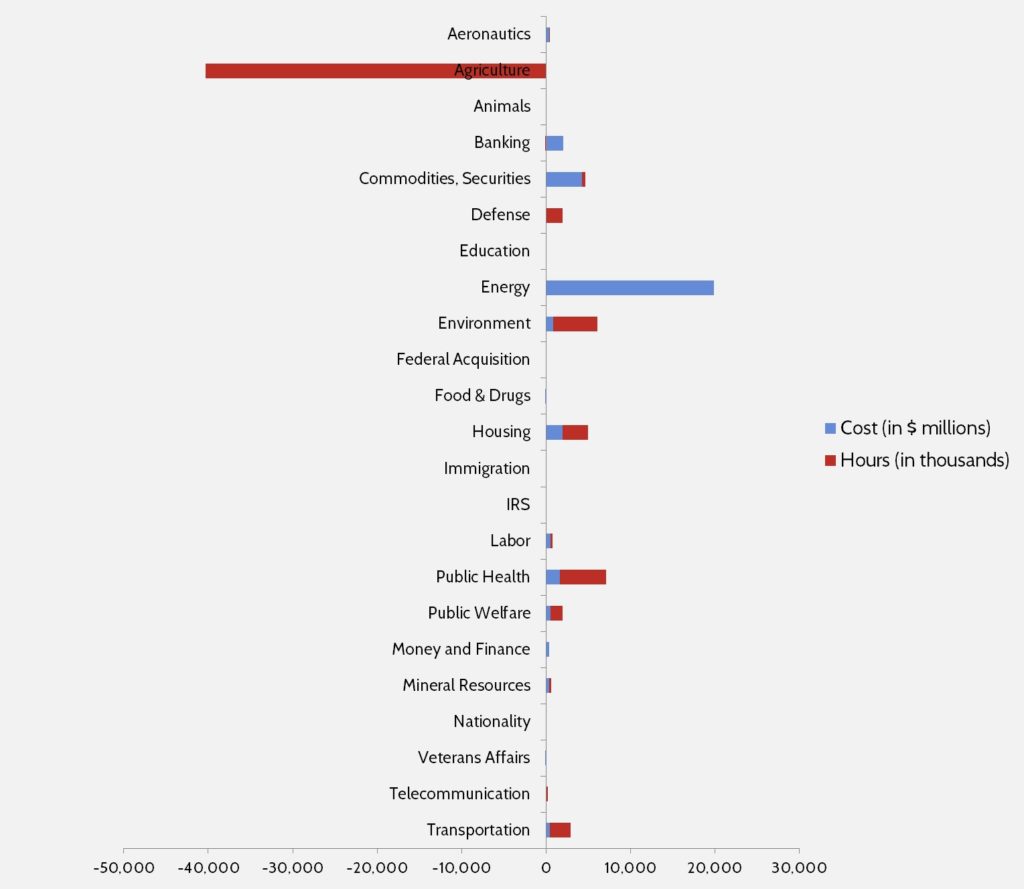Week in Regulation
September 5, 2017
More Deregulatory Actions On The Way
A pair of deregulatory proposed rules highlighted an otherwise quiet week in the world of regulations. On net, the week included more than $2 billion in total regulatory savings ($276 million annually). There were no monetized benefit estimates, but agencies did include more than 13,000 hours of new paperwork burdens. The per capita regulatory burden for 2017 is $452.
Regulatory Toplines
- New Proposed Rules: 27
- New Final Rules: 82
- 2017 Total Pages of Regulation: 41,746
- 2017 Final Rules: $32.9 Billion
- 2017 Proposed Rules: $111.8 Billion
The American Action Forum (AAF) has catalogued regulations according to their codification in the Code of Federal Regulations (CFR). The CFR is organized into 50 titles, with each title corresponding to an industry or part of government. This snapshot of final rules (a change from earlier versions) will help to determine which sectors of the economy receive the highest number of regulatory actions.
Tracking Regulatory Modernization
There were two substantial deregulatory proposals this week, both from the Department of Labor (DOL) The most notable deregulatory action was DOL extending the compliance date for certain aspects of its Fiduciary Rule. This action means affected entities now have until July 1, 2019 to fully comply with the relevant requirements. This 18-month reprieve could produce savings of up to $2.2 billion. The other proposed rule would give crane operators an additional year to meet certification requirements. This extension could save affected parties more than $21 million.
On regulatory budget implementation, below are the agencies that have accrued annual savings or new costs under the president’s one-in, two-out budget; proposed rules are not included:
- Defense: -$400 million
- Interior: -$360.37 million
- Education: -$100 million
- Labor: -$78 million
- Veterans Affairs: -$1.9 million
- HHS: $23.91 million
- EPA: $60 million
- Energy: $34 million
Many of these figures are the result of CRA resolutions of disapproval. Given their historic regulatory output, AAF can predict that Defense, Interior, and Education will likely meet the goal of $0 in net regulatory costs by the end of this fiscal year.
Affordable Care Act
Since passage, based on total lifetime costs of the regulations, the Affordable Care Act has imposed costs of $53 billion in final state and private-sector burdens and 176.9 million annual paperwork hours.
Dodd-Frank
Click here to view the total estimated revised costs from Dodd-Frank; since passage, the legislation has produced more than 74.8 million final paperwork burden hours and imposed $38.9 billion in direct compliance costs.
Total Burdens
Since January 1, the federal government has published $144.7 billion in compliance costs ($32.9 billion in final rules) and has cut 17.3 million paperwork burden hours (due to 22.8 million in reductions from final rules). Click below for the latest Reg Rodeo findings.












